Vermicomposting or composting with the help of worms is a natural way to make organic fertilizer at home. The compost is the best eco friendly food for the plants in your home. If you can make it in bigger quantities, you can sell it to your neighbors and nearby plant nurseries. Who knows, it might turn out to be a profitable business venture! It’s very simple to make Vermicompost. You need just a few things and few worms. Just remember to keep the worms out of the sun when the weather is hot and in the hot sun when the weather is cold. Here’s how you can vermicompost at home:
Tips for vermicomposting at home
Things you will need
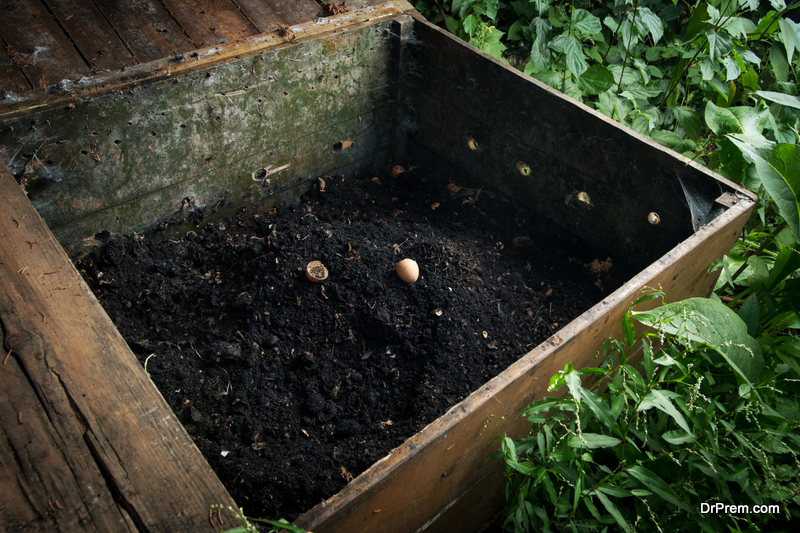 Vermicomposting requires a few things:
Vermicomposting requires a few things:
Compost bin: It’s a bin to collect your kitchen’s food scraps to use to make the compost
Worm bin: You can buy one or make one yourself
Worms: Red wigglers
Spray bottle: To spray the compost from time to time with water
Where to keep the bin
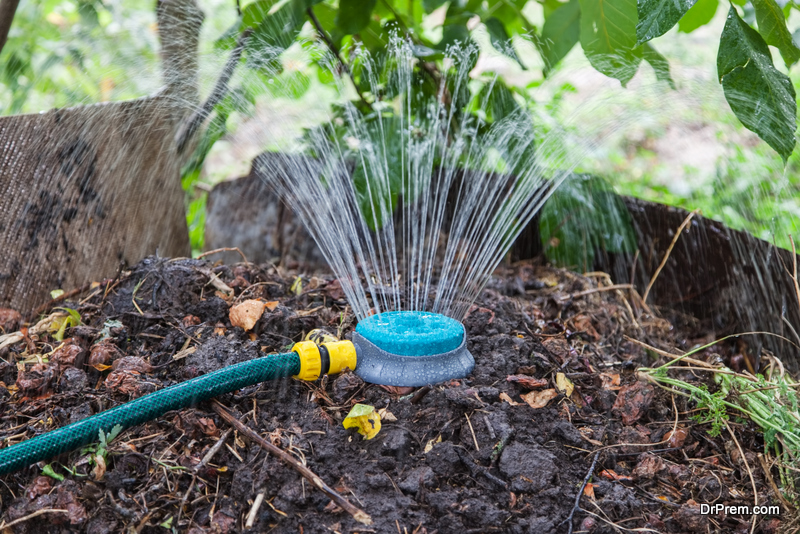 The vermicomposting bin should be kept under your kitchen sink or inside your garage, with the only consideration being temperature. The area you designate for the bin should be between 40-80 degree Fahrenheit. Worms do not like vibrations or noise, so the bin should ideally be located in a place which is dark, quiet, peaceful and warm!
The vermicomposting bin should be kept under your kitchen sink or inside your garage, with the only consideration being temperature. The area you designate for the bin should be between 40-80 degree Fahrenheit. Worms do not like vibrations or noise, so the bin should ideally be located in a place which is dark, quiet, peaceful and warm!
How to make the worm bin
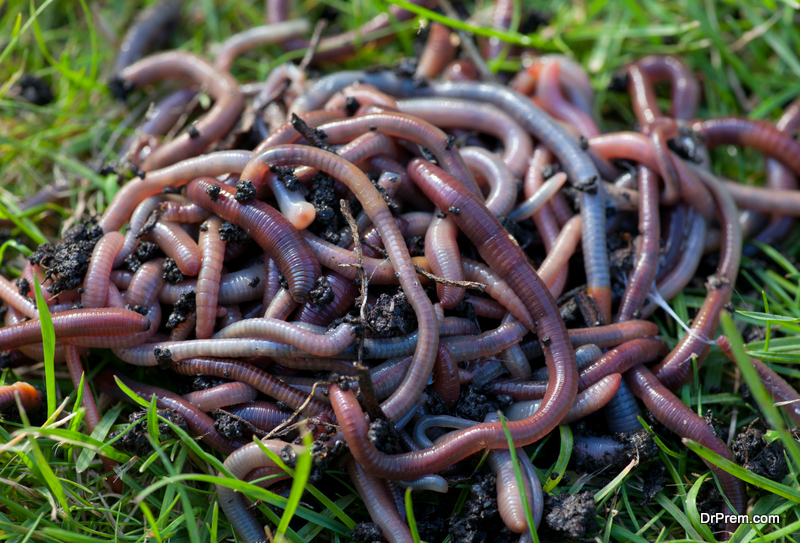 It’s quite easy to make the worm bin for worm composting. You will require two plastic bins. Select the bin size according to the organic waste produced in your home. You will need bigger sized bin if there is a lot of kitchen waste generated, and a small one if you don’t have much food waste.
It’s quite easy to make the worm bin for worm composting. You will require two plastic bins. Select the bin size according to the organic waste produced in your home. You will need bigger sized bin if there is a lot of kitchen waste generated, and a small one if you don’t have much food waste.
The first step is to put one bin within the other one. At the bottom of the top bin, you have to drill some holes so that the water from compost can drain into the bin which is at the bottom.
Between the two bins, you should place some kind of spacers which can collect excess water. The spacers could be old plastic containers, wood scraps, tiny coffee cups or anything which will act as a leak free container.
The average depth of a worm composting bin is between 8-12 inches. The bin you should be opaque, as worms do not like light.
Making the lid for the worm bin
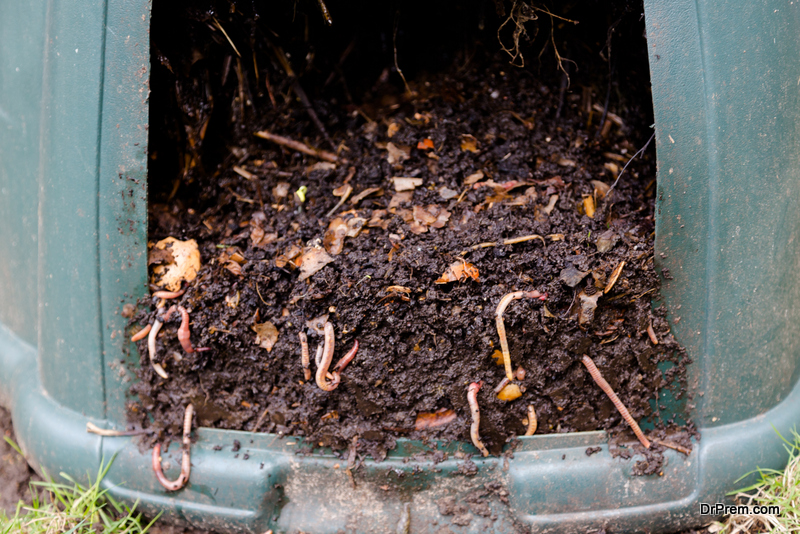 The worms have to breathe, so you have to drill small holes into the lid. You will need just one lid. A lid helps to control the smell of the compost, reduce it and sometimes you might not even smell it. At least, it will be quite bearable if you keep the compost indoors, in the basement or another area you have dedicated to it.
The worms have to breathe, so you have to drill small holes into the lid. You will need just one lid. A lid helps to control the smell of the compost, reduce it and sometimes you might not even smell it. At least, it will be quite bearable if you keep the compost indoors, in the basement or another area you have dedicated to it.
Then cover the holes with a light fabric which will allow air to get inside the bin and also prevent the worms from coming out of the bin. The fabric can be some type of netty fabric. By the way, the smell of the compost also depends on what kind of food waste you are putting inside the bin.
How to make the bedding
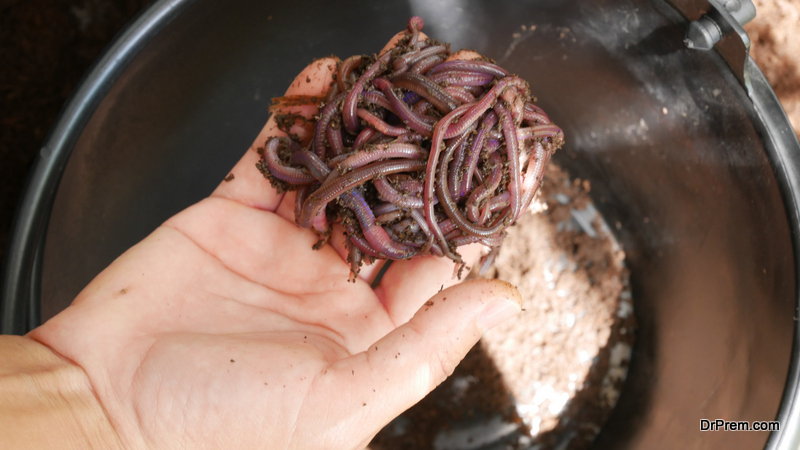 To make a nice, comfortable home for the worms, you have to create cozy bedding for them. The bedding should fill the compost bin approximately 1/3rd to ½ full. Soak some shredded newspapers and/or cardboard. Worms like a bed which is moist, about 75% water. Garden soil, fresh chicken, horse or cow manure should be avoided as these will increase the temperature of the bin and emit a foul smell. Citrusy foods will make the bedding acidic and may cause the worms to come out of the bin.
To make a nice, comfortable home for the worms, you have to create cozy bedding for them. The bedding should fill the compost bin approximately 1/3rd to ½ full. Soak some shredded newspapers and/or cardboard. Worms like a bed which is moist, about 75% water. Garden soil, fresh chicken, horse or cow manure should be avoided as these will increase the temperature of the bin and emit a foul smell. Citrusy foods will make the bedding acidic and may cause the worms to come out of the bin.
Put fine sand, cornstarch, sawdust leaves or egg shells (ground) as the worms need something gritty to help them chew the food. After the bin is running, then the worms won’t require any more grit, till you clean the bin and get it ready for the next batch of environmentally friendly compost.
Place the worms in the middle of the bed, close the lid and let them get familiar with their new home. Till then, they can feed from the bedding.
What materials can you use to make vermicompost
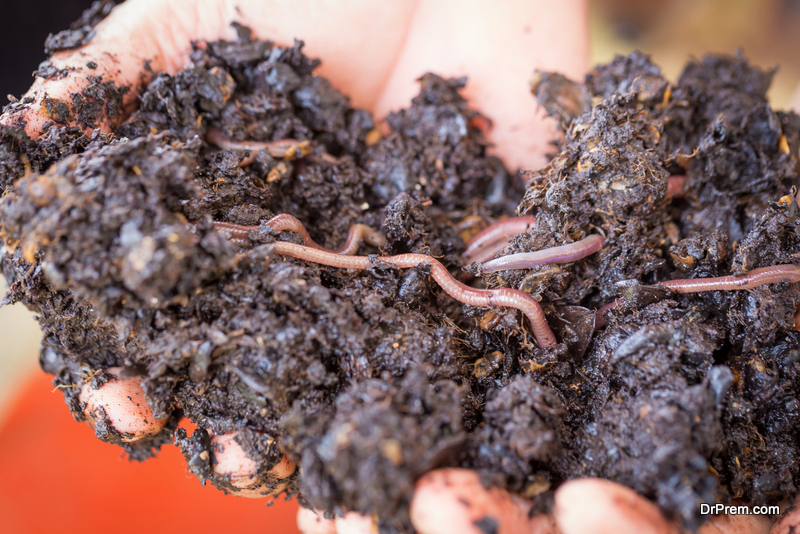 Vermicomposting involves using the kitchen scraps so that your waste food is put to good use, and you are producing the right kind of fertilizer for organic agriculture. You can use this compost for your vegetable garden in the backyard or potted vegetables in the balcony.
Vermicomposting involves using the kitchen scraps so that your waste food is put to good use, and you are producing the right kind of fertilizer for organic agriculture. You can use this compost for your vegetable garden in the backyard or potted vegetables in the balcony.
Worms like the things that you can’t eat, so it is a great solution for you and the environment, and the worms of course, which get fed and have a secure home! You can use vegetable peelings, leftovers, yard waste and other organic waste from your home and garden.
It’s best not to put dairy or meat in the compost bins, and no citrusy food either, if you want the best results. Fish, meat scraps, oily foods, will make the compost pile smell and attract rodents and flies. The smell is not because of the worms but because if these foods are not consumed in time, then it will rot and cause the stink. Always notice the rate of consumption and feed your worms accordingly, so that there is no scope for the food to rot in the bin.
Tea bags and coffee grounds can be used as worm food.
You have to spray a little water from time to time in order to keep the compost mixture moist but not at all wet, so that if you squeeze it, it will not drip water.
What kind of worms to use
 Red wigglers are the worms which should be used. You can buy them online, and store them in a container. In some time, the worms will reproduce and you will not have to buy them anymore. Initially, you could buy 1,000 worms for about 35 dollars. The book ‘Worms Eat My Garbage’ suggests using 2,000 worms for one pound of food waste.
Red wigglers are the worms which should be used. You can buy them online, and store them in a container. In some time, the worms will reproduce and you will not have to buy them anymore. Initially, you could buy 1,000 worms for about 35 dollars. The book ‘Worms Eat My Garbage’ suggests using 2,000 worms for one pound of food waste.
You can harvest your environmentally friendly nutrient for plants every two to six months depending on the number of worms and the amount of food you’re feeding them. Always wear gloves while harvesting, and repeat the entire process to have enough fertilizer for your organic agriculture.

